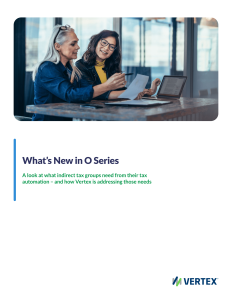Open Banking: How APIs are Shaping the Future of Finance

The financial landscape is undergoing a radical transformation, driven by technological advancements and evolving consumer expectations. One of the most significant developments in recent years is the rise of open banking, a concept that allows third-party financial service providers to access consumer banking information through APIs (Application Programming Interfaces). Open banking is not just a buzzword; it’s a paradigm shift that is reshaping the way financial services are delivered, consumed, and experienced. In this blog, we’ll explore the concept of open banking, how APIs are driving this revolution, and what the future holds for the finance industry.
What is Open Banking?
Open banking refers to the practice of banks and financial institutions sharing their customers’ financial data with third-party providers, typically through APIs. This sharing of data is done with the customer’s explicit consent and is aimed at creating a more competitive and innovative financial ecosystem. Open banking enables a range of new services and products, from personalized financial advice to seamless payment solutions, making banking more accessible and customer-centric.
The Role of APIs in Open Banking
APIs are the backbone of open banking. An API is a set of protocols and tools that allow different software applications to communicate with each other. In the context of open banking, APIs enable third-party developers to build applications and services that can interact with a bank’s systems, access customer data, and perform transactions on behalf of the customer.
Here’s how APIs are shaping the future of finance:
1. Enabling Innovation and New Business Models
FinTech Collaboration
APIs are breaking down the traditional silos in the financial industry by allowing FinTech companies to collaborate with banks and other financial institutions. This collaboration leads to the creation of innovative financial products and services that are more tailored to the needs of consumers. For example, budgeting apps that aggregate data from multiple bank accounts can provide users with a comprehensive view of their finances, helping them make better financial decisions.
Emergence of New Services
APIs have given rise to a new generation of financial services that were previously unimaginable. From peer-to-peer payment platforms to robo-advisors and personalized lending solutions, APIs have enabled the development of services that cater to specific customer needs. These services are often more user-friendly, cost-effective, and accessible than traditional banking products.
2. Enhancing Customer Experience
Personalization and Customization
Open banking, powered by APIs, allows for a high degree of personalization in financial services. By analyzing customer data, third-party providers can offer tailored financial advice, product recommendations, and personalized offers. For example, a personal finance management app might suggest ways to save money based on a user’s spending patterns, or a lending platform might offer personalized loan options based on the user’s financial history.
Seamless Integration
APIs facilitate seamless integration between different financial services, providing customers with a more cohesive and streamlined experience. For example, a user might connect their bank account to a payment app, investment platform, and budgeting tool, all of which work together to provide a unified financial experience. This level of integration reduces friction, making it easier for customers to manage their finances.
3. Driving Competition and Lowering Costs
Leveling the Playing Field
Open banking is leveling the playing field by allowing smaller FinTech companies to compete with established banks. APIs make it easier for these companies to enter the market and offer innovative services that challenge traditional banking models. This increased competition drives innovation and forces banks to improve their offerings to retain customers.
Cost-Effective Solutions
By leveraging APIs, FinTech companies can create more cost-effective financial solutions. For example, digital-only banks (neobanks) can offer lower fees and better interest rates by eliminating the overhead costs associated with physical branches. These savings are often passed on to customers, making financial services more affordable.
4. Improving Financial Inclusion
Access to Underserved Markets
Open banking has the potential to improve financial inclusion by providing access to financial services for underserved populations. APIs allow FinTech companies to develop solutions that cater to the specific needs of these groups. For example, mobile banking apps that offer low-cost, easy-to-use financial services can reach individuals in rural or low-income areas who may not have access to traditional banking.
Empowering Consumers
Open banking empowers consumers by giving them more control over their financial data and how it is used. With APIs, consumers can choose the services that best meet their needs and connect them to their bank accounts with ease. This increased control leads to better financial outcomes, as consumers can access a wider range of products and services that are tailored to their specific circumstances.
5. Ensuring Security and Compliance
Data Security
One of the primary concerns with open banking is data security. APIs must be designed with robust security measures to protect customer data from breaches and unauthorized access. Banks and FinTech companies must work together to ensure that their APIs adhere to strict security standards and comply with regulations such as GDPR (General Data Protection Regulation) in Europe or CCPA (California Consumer Privacy Act) in the United States.
Regulatory Compliance
Open banking is subject to regulatory oversight to ensure that it is implemented safely and fairly. APIs must comply with regulatory requirements, such as providing secure authentication and data protection. Additionally, regulators may require banks and FinTech companies to provide transparency about how customer data is used and shared.
Conclusion
Open banking, powered by APIs, is transforming the financial industry by driving innovation, enhancing customer experience, fostering competition, and improving financial inclusion. As the adoption of open banking continues to grow, we can expect to see even more groundbreaking developments in the way financial services are delivered and consumed. For consumers, this means greater access to personalized, cost-effective, and secure financial products and services. For the financial industry, it represents an exciting opportunity to reimagine the future of finance in a way that is more open, collaborative, and customer-centric.







